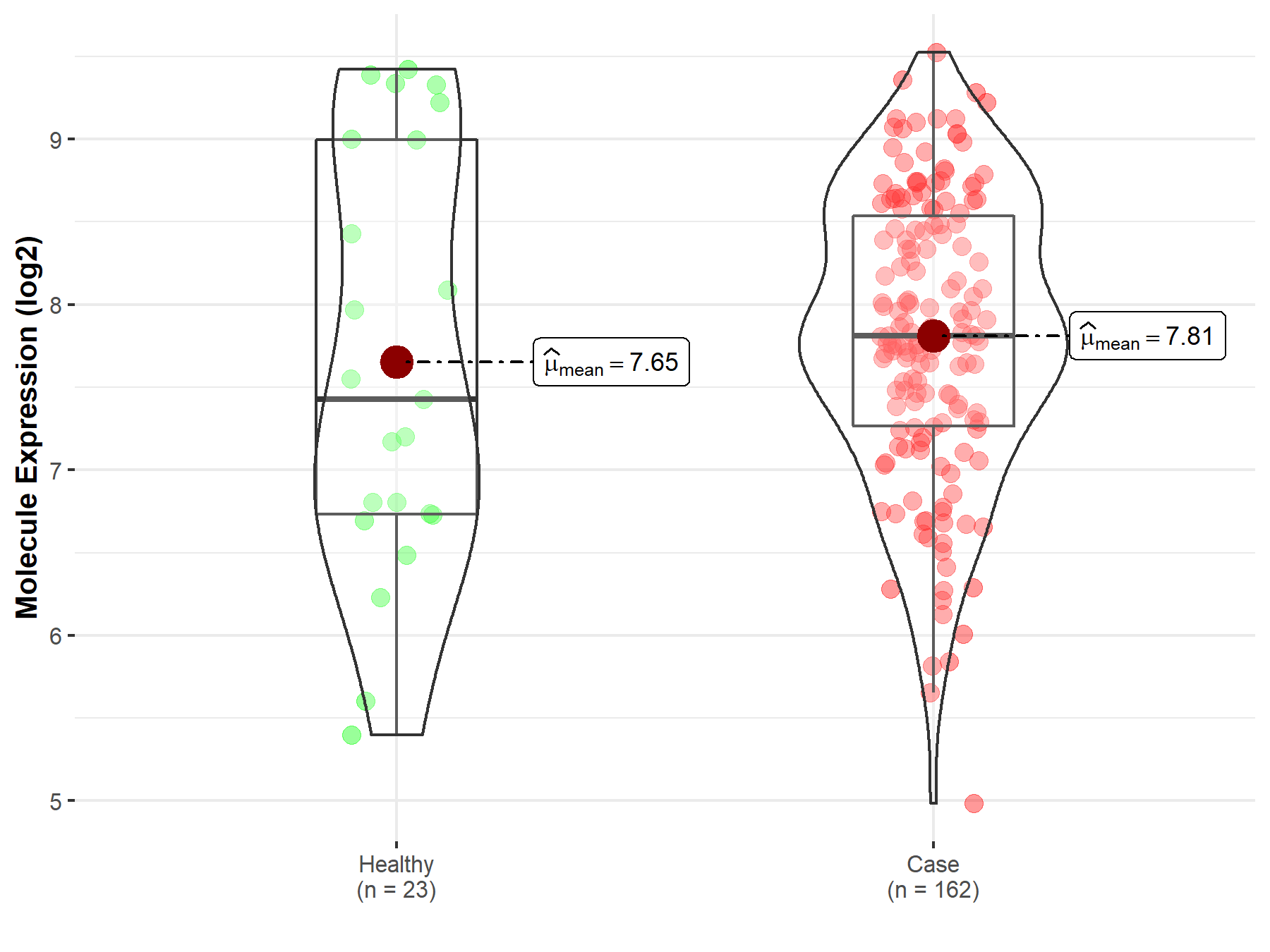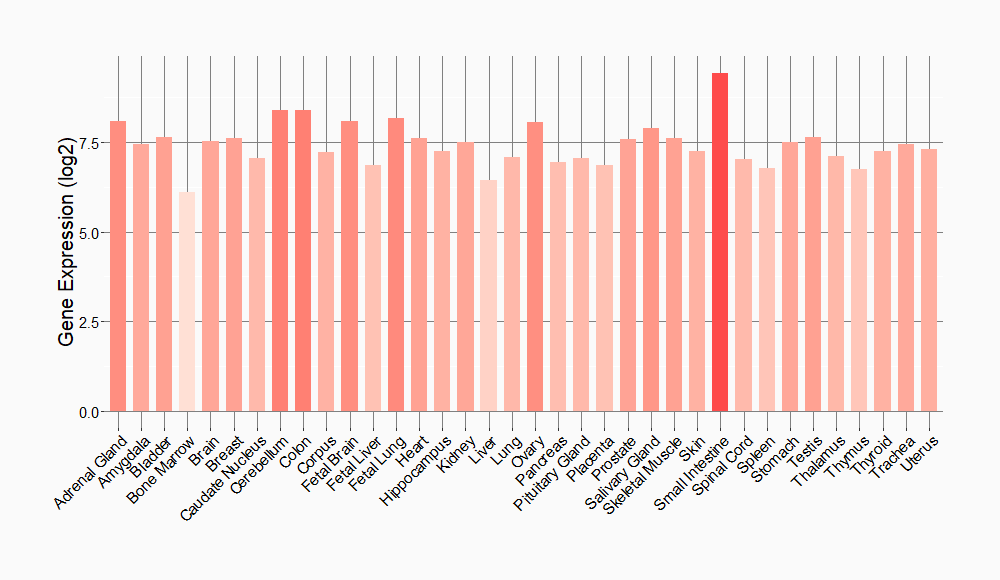Molecule Information
General Information of the Molecule (ID: Mol01835)
| Name |
Guanine nucleotide-binding protein subunit alpha-11 (GNA11)
,Homo sapiens
|
||||
|---|---|---|---|---|---|
| Synonyms |
Guanine nucleotide-binding protein subunit alpha-11; G alpha-11; G-protein subunit alpha-11; Guanine nucleotide-binding protein G(y) subunit alpha; GNA11; GA11
Click to Show/Hide
|
||||
| Molecule Type |
Protein
|
||||
| Gene Name |
GNA11
|
||||
| Gene ID | |||||
| Location |
chr19:3,094,362-3,123,999[+]
|
||||
| Sequence |
MTLESMMACC LSDEVKESKR INAEIEKQLR RDKRDARREL KLLLLGTGES GKSTF
IKQMR IIHGAGYSEE DKRGFTKLVY QNIFTAMQAM IRAMETLKIL YKYEQNKANA LLIREVDVEK VTTFEHQYVS AIKTLWEDPG IQECYDRRRE YQLSDSAKYY LTDV DRIATL GYLPTQQDVL RVRVPTTGII EYPFDLENII FRMVDVGGQR SERRKWIHC F ENVTSIMFLV ALSEYDQVLV ESDNENRMEE SKALFRTIIT YPWFQNSSVI LFL NKKDLLE DKILYSHLVD YFPEFDGPQR DAQAAREFIL KMFVDLNPDS DKIIYSHF TC ATDTENIRFV FAAVKDTILQ LNLKEYNLV Click to Show/Hide
|
||||
| Function |
Guanine nucleotide-binding proteins (G proteins) are involved as modulators or transducers in various transmembrane signaling systems. Acts as an activator of phospholipase C. Transduces FFAR4 signaling in response to long-chain fatty acids (LCFAs).
Click to Show/Hide
|
||||
| Uniprot ID | |||||
| Ensembl ID | |||||
| HGNC ID | |||||
| Click to Show/Hide the Complete Species Lineage | |||||
Type(s) of Resistant Mechanism of This Molecule
Drug Resistance Data Categorized by Drug
Approved Drug(s)
1 drug(s) in total
| Drug Sensitivity Data Categorized by Their Corresponding Mechanisms | ||||
|
|
||||
| Disease Class: Uveal melanoma | [1] | |||
| Sensitive Disease | Uveal melanoma [ICD-11: 2D0Y.0] | |||
| Sensitive Drug | Trametinib | |||
| Molecule Alteration | Missense mutation | p.Q209L (c.626A>T) |
||
| Experimental Note | Revealed Based on the Cell Line Data | |||
| Experiment for Molecule Alteration |
Western blotting analysis | |||
| Experiment for Drug Resistance |
Cell Titer-blue assay | |||
| Mechanism Description | The missense mutation p.Q209L (c.626A>T) in gene GNA11 cause the sensitivity of Trametinib by unusual activation of pro-survival pathway | |||
Clinical Trial Drug(s)
1 drug(s) in total
| Drug Sensitivity Data Categorized by Their Corresponding Mechanisms | ||||
|
|
||||
| Disease Class: Melanoma | [2] | |||
| Sensitive Disease | Melanoma [ICD-11: 2C30.0] | |||
| Sensitive Drug | Selumetinib | |||
| Molecule Alteration | Missense mutation | p.Q209P (c.626A>C) |
||
| Experimental Note | Identified from the Human Clinical Data | |||
| Disease Class: Melanoma | [2] | |||
| Sensitive Disease | Melanoma [ICD-11: 2C30.0] | |||
| Sensitive Drug | Selumetinib | |||
| Molecule Alteration | Missense mutation | p.Q209L (c.626A>T) |
||
| Experimental Note | Identified from the Human Clinical Data | |||
| Disease Class: Melanoma | [2] | |||
| Sensitive Disease | Melanoma [ICD-11: 2C30.0] | |||
| Sensitive Drug | Selumetinib | |||
| Molecule Alteration | Missense mutation | p.Q209P (c.626A>C) |
||
| Experimental Note | Identified from the Human Clinical Data | |||
| Disease Class: Melanoma | [2] | |||
| Sensitive Disease | Melanoma [ICD-11: 2C30.0] | |||
| Sensitive Drug | Selumetinib | |||
| Molecule Alteration | Missense mutation | p.Q209L (c.626A>T) |
||
| Experimental Note | Identified from the Human Clinical Data | |||
Preclinical Drug(s)
2 drug(s) in total
| Drug Sensitivity Data Categorized by Their Corresponding Mechanisms | ||||
|
|
||||
| Disease Class: Uveal melanoma | [3] | |||
| Sensitive Disease | Uveal melanoma [ICD-11: 2D0Y.0] | |||
| Sensitive Drug | AEB071/Binimetinib | |||
| Molecule Alteration | Missense mutation | p.Q209L (c.626A>T) |
||
| Experimental Note | Identified from the Human Clinical Data | |||
| In Vitro Model | OMM-GN11 | N.A. | Mus musculus (Mouse) | N.A. |
| OMM13 | N.A. | . | N.A. | |
| Mel202 | Eye | Homo sapiens (Human) | CVCL_C301 | |
| GNAQ cells | N.A. | . | N.A. | |
| Mel270 cells | Skin | Homo sapiens (Human) | CVCL_C302 | |
| GNA11 cells | N.A. | . | N.A. | |
| UPMD-1 cells | Skin | Homo sapiens (Human) | CVCL_C297 | |
| 92-1 cells | Bladder | Homo sapiens (Human) | CVCL_W909 | |
| Mel202 | Eye | Homo sapiens (Human) | CVCL_C301 | |
| In Vivo Model | C57/BL6 mouse model | Mus musculus | ||
| Experiment for Molecule Alteration |
Western blotting analysis | |||
| Experiment for Drug Resistance |
Cell proliferation assay | |||
| Drug Sensitivity Data Categorized by Their Corresponding Mechanisms | ||||
|
|
||||
| Disease Class: Uveal melanoma | [4] | |||
| Sensitive Disease | Uveal melanoma [ICD-11: 2D0Y.0] | |||
| Sensitive Drug | FR900359 | |||
| Molecule Alteration | Missense mutation | p.Q209L (c.626A>T) |
||
| Experimental Note | Revealed Based on the Cell Line Data | |||
| In Vitro Model | UM002B cells | Brain | Homo sapiens (Human) | N.A. |
| Omm13 cells | N.A. | . | N.A. | |
| Ocm3 cells | Skin | Homo sapiens (Human) | CVCL_6937 | |
| 92-1 cells | Bladder | Homo sapiens (Human) | CVCL_W909 | |
| Experiment for Molecule Alteration |
Sanger sequencing assay; Western blotting analysis | |||
Investigative Drug(s)
1 drug(s) in total
| Drug Sensitivity Data Categorized by Their Corresponding Mechanisms | ||||
|
|
||||
| Disease Class: Uveal melanoma | [5] | |||
| Sensitive Disease | Uveal melanoma [ICD-11: 2D0Y.0] | |||
| Sensitive Drug | TAK-733 | |||
| Molecule Alteration | Missense mutation | p.Q209L (c.626A>T) |
||
| Experimental Note | Revealed Based on the Cell Line Data | |||
| In Vitro Model | Wn1366 cells | Skin | Homo sapiens (Human) | CVCL_6789 |
| SkMEL28 cells | Skin | Homo sapiens (Human) | CVCL_0526 | |
| SBCL2 cells | Skin | Homo sapiens (Human) | CVCL_D732 | |
| Experiment for Molecule Alteration |
Western blotting analysis | |||
| Experiment for Drug Resistance |
MTS assay | |||
| Mechanism Description | The missense mutation p.Q209L (c.626A>T) in gene GNA11 cause the sensitivity of TAK-733 by unusual activation of pro-survival pathway | |||
Disease- and Tissue-specific Abundances of This Molecule
ICD Disease Classification 02

| Differential expression of molecule in resistant diseases | ||
| The Studied Tissue | Skin | |
| The Specified Disease | Melanoma | |
| The Expression Level of Disease Section Compare with the Healthy Individual Tissue | p-value: 5.69E-01; Fold-change: 3.82E-01; Z-score: 2.99E-01 | |
|
Molecule expression in the diseased tissue of patients
Molecule expression in the normal tissue of healthy individuals
|
||
| Disease-specific Molecule Abundances |

|
Click to View the Clearer Original Diagram |
Tissue-specific Molecule Abundances in Healthy Individuals


|
||
References
If you find any error in data or bug in web service, please kindly report it to Dr. Sun and Dr. Zhang.
